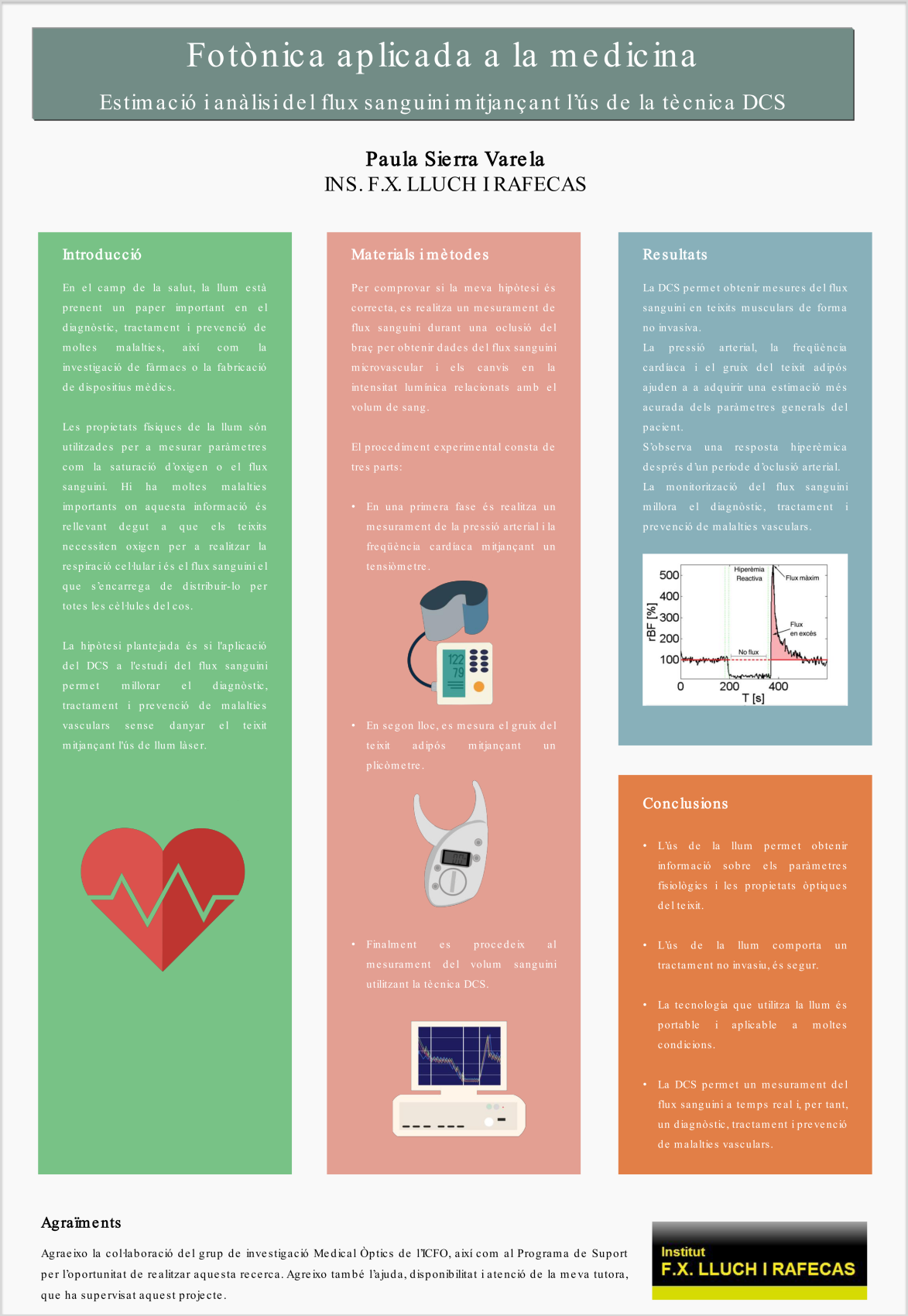Fotònica aplicada a la medicina: Estimació i anàlisi del flux sanguini mitjançant l’ús de la tècnica DCS
Paula Sierra Varela
Institut F. X. LLuch i Rafecas – Vilanova i la geltrú
Photonics play an important role in many applications and measurements. In medicine, light is becoming an important tool to treatment, diagnosis and prevention of diseases likewise drug investigation and medical devices’ production. Light’s physical properties are used to measure parameters such as oxygen saturation or blood flow. There are many important diseases where this information is relevant because tissues need oxygen to do their metabolic functions and the blood flow is responsible of bringing it to cells. In my project the objective is to verify if the application of DCS in blood flow index’s study improves diagnosis, treatment and prevention of vascular diseases using laser and without damaging tissue. In order to verify my hypothesis, a blood flow measurement is performed during an arm cuff occlusion in order to obtain data from the microvascular blood flow and the change in the light intensity correlated with blood volume. The experimental procedure consists of a first phase where blood pressure and cardiac frequency are measured with a blood pressure monitor, a second part consisting on the measurement of adipose tissue thickness using a skinfold caliper and finally, a third step that resides in the measurement of blood flow volume using DCS. In conclusion, DCS allows for obtaining blood flow measurements in muscle tissue without damaging it. Blood flow monitoring and the recording of other data such as blood pressure, heart rate and adipose tissue thickness, as well as an hyperemic response observing after an arterial occlusion period helps to acquire a more accurate estimation of the patient general parameters. Use of light allows us to obtain information of physiological parameters and optical properties of tissue, in a non-invasive way without interrupting the rate of blood flow. DCS allows real-time measurement of blood flow and, therefore, diagnosis, treatment and prevention of vascular diseases.


